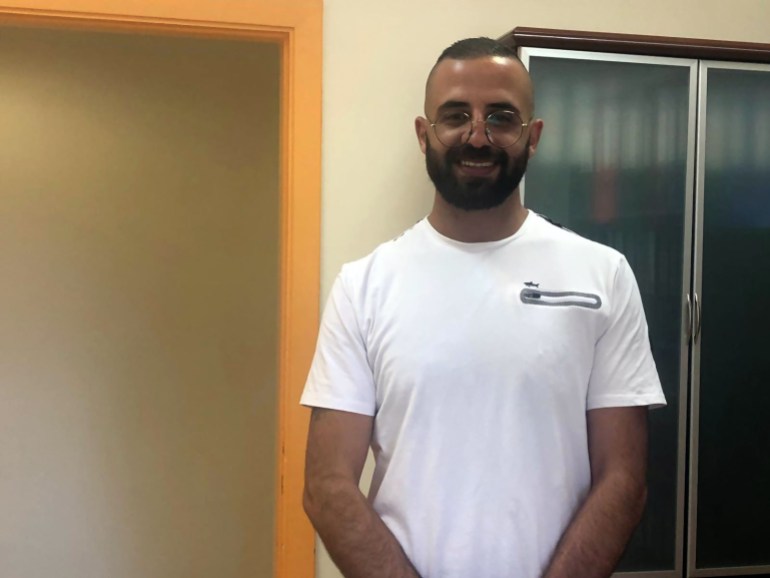In the latest agreement between the Israeli police and the organizers of the "Flags Dance" march, it was agreed that the settlers would reach the Al-Buraq Wall, west of Al-Aqsa Mosque, through the Jewish and Christian Quarters, and not through the Muslim Quarter, as the organizers demanded.
The march is supposed to start from the square of the Israeli Ministry of Education, west of the city, at five in the afternoon, on Tuesday, to pass through the "Prophets' Road", then Sultan Suleiman Street, and from there to Bab al-Amud, where the flags dance will be performed.
The participants are then supposed to return to Bab Al-Khalil - one of the gates of Al-Aqsa Mosque - and enter it, then they will be divided into two parts, one of which goes to Al-Buraq Square through the Armenian neighborhood, and the other section through the Christian neighborhood, according to what was published by the newspaper "Israel Today".
Despite what has been published and published successively about this march, no one knows what the final path will be, and the participants may force the police to enter through Bab al-Amud and reach al-Buraq Square via al-Wad Road and the Islamic Quarter, which is the traditional annual path of the march.
Al Jazeera Net asked the Christians of Jerusalem whether diverting the "flags dance" along their neighborhoods was an attempt to isolate them.
Bassem Saeed: Jerusalem Christians refuse to pass the march from their neighborhoods (Al Jazeera Net)
War ignites again
Head of the Christian Quarter Development Association, Basem Saeed, said that the 6,000 Christians of the Old City refuse to pass this march from their alleys, considering that organizing it may lead to massacres again, similar to what happened last month, when a new war broke out on Gaza because of it.
Saeed believes that the passage of this march poses a danger to the neighborhood’s youth and children due to the provocations of the settlers participating in it, adding that Christians also reject the passage of this march in the Islamic neighborhood and testify annually to the destruction of Jerusalemites’ property located in its path.
Christian Jerusalemite activist Nidal Abboud responded to the approved path, saying that Christians are a minority compared to Muslims, but they are not weak and "will not allow settlers to roam the Old City in any way."
Al-Quds Christian activist Nidal Abboud: We will not allow extremists to pass through our homes and shops (Al-Jazeera Net)
Abboud said, "We also refuse to harm Islamic and Christian holy sites and any neighborhood and alley in the Old City, and we will not allow extremists to pass through the roads leading to our homes and shops, and if they pass by the occupation force, we will be on the lookout for them, Muslims and Christians. We were and are still one hand in Jerusalem."
In turn, the head of the Christian National Assembly in Jerusalem, Dimitri Diliani, said that the Palestinian people as a whole stood and prepared to challenge this march in its original and modified history after the aggression on Gaza.
He added, "For us Palestinians, nothing has changed, whether they pass by the Armenian, Islamic or Christian neighborhoods, it makes no difference because this is an entire occupied city, and we issue the same calls that we always make to gather and defend properties, institutions and shops in the planned path."
provocation and aggression
Diliani described the march as aggressive, racist and provocative, stressing the need to challenge and confront it, as happened in previous years.
Diliani refuses to classify the neighborhoods of the Old City according to religion, saying that all neighborhoods of Jerusalem are Arab and there is no difference between one alley and another.
He emphasized that the alternative route for extremists to enter from Bab al-Khalil towards the Al-Buraq Wall aims to single out Christians, but it was also chosen for the possibility of controlling and monitoring it from a security point of view.
He said: "The streets on this path are wider than the other alleys, and because the Israelis take it permanently to reach the Al-Buraq Wall, it is equipped with a very sophisticated surveillance camera and audio system, and that is why it was chosen."
It is noteworthy that the Israeli police announced the deployment of 2,500 members of its forces to secure the flags march, after the approval of the new Minister of Internal Security Omer Bar-Lev on the march at the conclusion of a session to assess the situation, which he held with the police command and senior officials in the army and the General Security Service (Shin Bet) on Monday.
There is still conflicting news about the final course of the march. Despite the consensus on the place of its start and the performance of the "flags dance" in Bab al-Amud, it is not clear whether it will enter the Old City from there through the Islamic Quarter, if the settlers put pressure on the police to allow them to do so, or That the latter would force them to return upwards towards Bab Al-Khalil to reach Al-Buraq Square through it.
The researcher in Jerusalem affairs, Ziad Abhis, confirmed that if the popular will for confrontation is present in sufficient numbers in the square, the police will be powerless again and the 2500 police will turn over to be the keenest people to prevent settlers from reaching Bab al-Amud Square.
It is noteworthy that the settlers failed to organize the “flags dance” march in memory of the so-called “unification of Jerusalem” last May, after the Palestinian resistance directed missiles at Jerusalem, and Israel launched an 11-day aggression on the Gaza Strip, leaving hundreds of martyrs and wounded.

